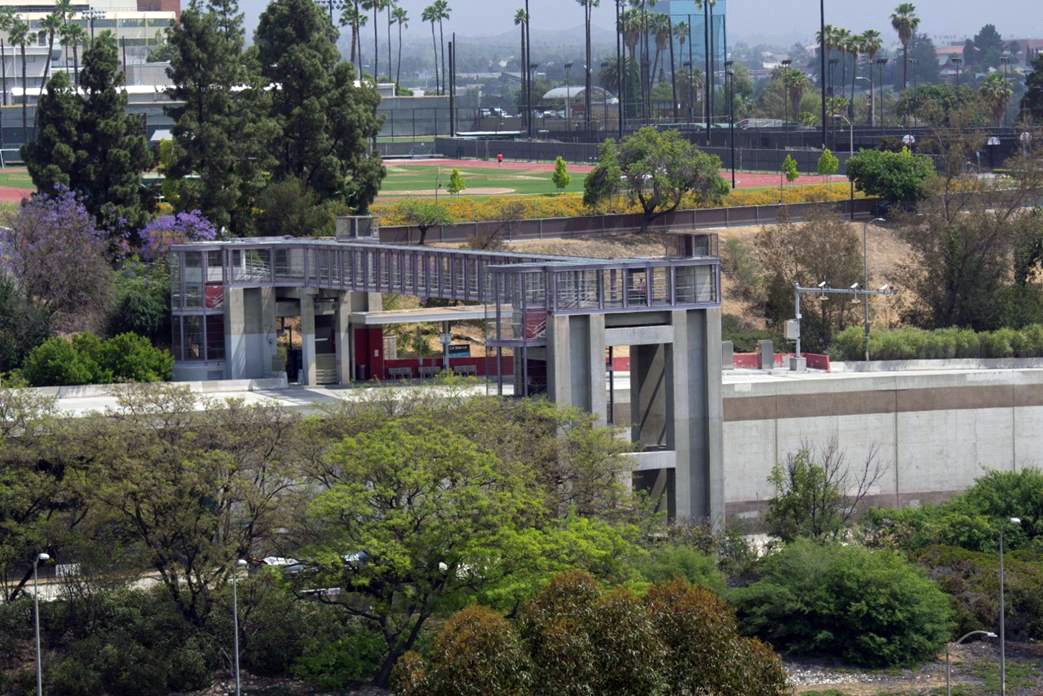Architect
Anthony Lumsden
Anthony J. Lumsden, FAIA (1928-2011)
Many of the sleek glass buildings that make up the skyline of Los Angeles—and major cities worldwide—exist in large part because of the innovative developments of Anthony J. Lumsden.
Working from ideas conceived at the office of Eero Saarinen, Lumsden and fellow architect Cesar Pelli pioneered the glass membrane (skin) design system. By reversing the mullions (vertical elements that separate windows) inward rather than outward, the system enabled completely new ways of “wrapping” buildings in glass, creating smooth curtain walls. The technique changed cityscapes throughout the world.
As the architect of many landmark buildings in Los Angeles, Anthony Lumsden left an indelible mark on the city. Born in Bournemouth England in 1928, Lumsden was raised in Australia and earned an architecture degree from the University of Sydney. Upon graduation in 1952, Lumsden traveled the world. He ended up in Michigan, where he landed a job with the great Eero Saarinen.
While working for Saarinen, he interacted with design luminaries such as Mies van der Rohe and Charles and Ray Eames, as well as working closely with renowned architect Pelli. After Saarinen’s unexpected death in 1961, both Pelli and Lumsden worked for Kevin Roche John Dinkeloo and Associates (KRJDA). Ultimately, it was Cesar Pelli who convinced Lumsden to relocate to Los Angeles and join him at the distinguished firm of Daniel, Mann, Johnson & Mendenhall (DMJM).
Lumsden served as design director of design at DMJM from 1968 to 1993 and formed his own practice in 1994. He received more than thirty architectural design awards, including the prestigious AIA Gold Medal Award. He taught architecture and design at numerous colleges and universities, including USC, UCLA, UC Berkeley, Cal-Poly Pomona, and SCI-Arch.
Perhaps Lumsden’s best-known glass membrane structure is the undulating Roxbury Plaza/Manufacturers Bank building at 9701 Wilshire Boulevard in Beverly Hills. Other notable designs include One Park Plaza at 3250 Wilshire and the Federal Aviation Administration building in Hawthorne.
Among Lumsden’s favorite projects was the Donald C. Tillman Water Reclamation Plant in Van Nuys, arguably the most attractive public facility in Los Angeles. Designed in 1982, the wastewater treatment plant is a cantilevered, modern marvel of metal and glass set in a Japanese garden.
After Lumsden’s passing in 2011, architectural historian Daniel Paul poignantly wrote, “We have lost one of the twentieth century’s best but most unsung architects.”
Related Places
-

Place
Roxbury Plaza
-

Place
University Bus Station Bridge
-

Place
One Park Plaza
-

Place
Century City Medical Plaza
-

Place
Roxbury Plaza
-

Place
University Bus Station Bridge
-

Place
One Park Plaza
-

Place
Century City Medical Plaza
-

Place
Donald C. Tillman Water Reclamation Plant & Japanese Garden
-

Place
Federal Aviation Administration West Coast Headquarters